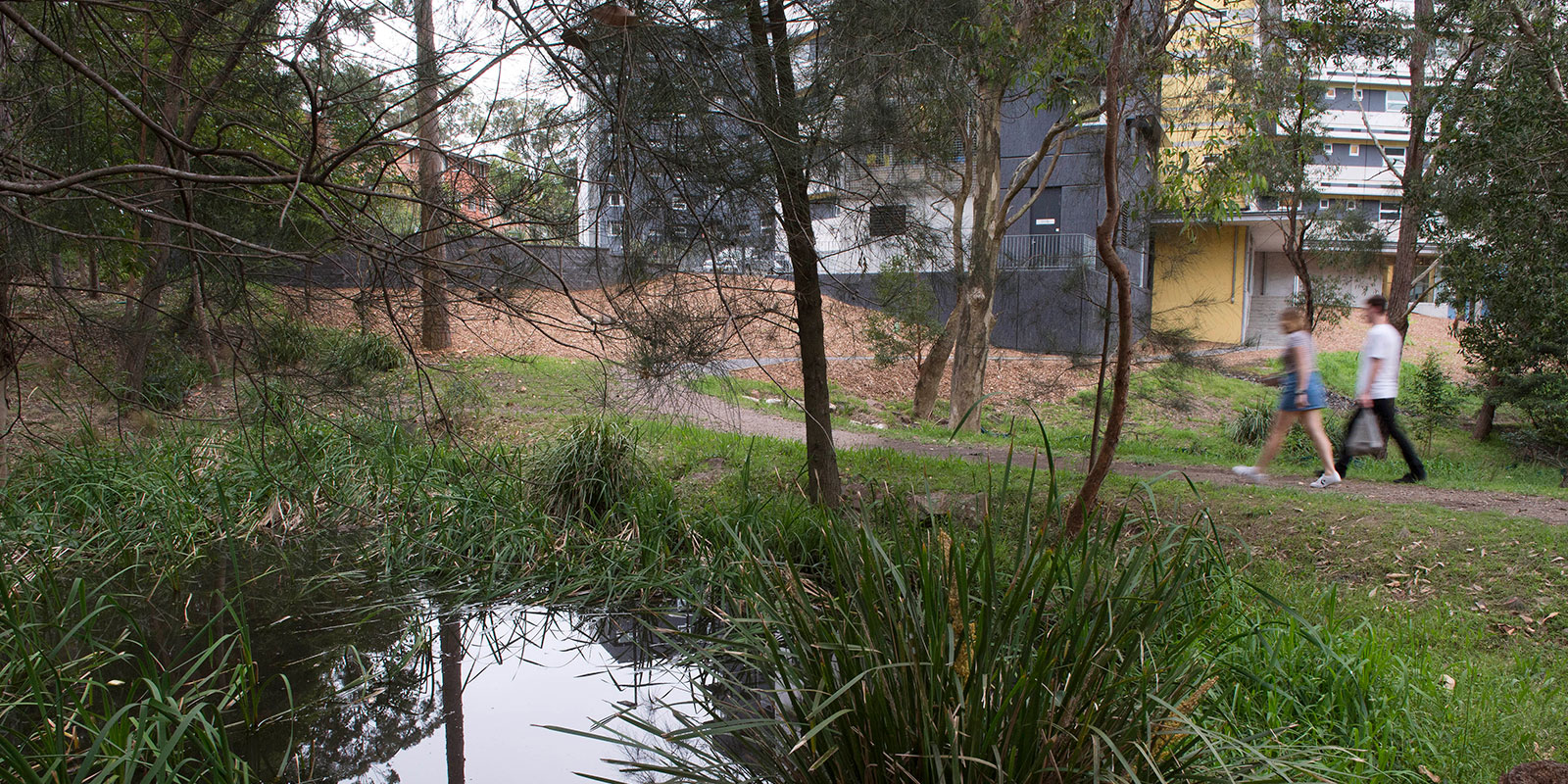

Goal 15:
Life on Land
Maintain and Extend Ecosystems and Biodiversity
The University of Newcastle has several ongoing research and engagement programs in 2024 that are helping protect, monitor, and restore ecosystems under threat, both locally (e.g. for koalas) and in the Pacific Islands (e.g. mangroves, coral reefs, invasive species and more).
Here are some of the key examples:
2024 Ecosystem and Biodiversity Maintenance
- Moata’a Living Lab & Mangrove Restoration in Samoa
Through its Pacific Node initiative, UoN collaborates with the village of Moata’a, Samoa, along with SPREP and other local partners to conserve mangrove ecosystems. Activities include ecosystem analysis, mangrove replanting, cultural programs, clean‑ups, and establishing the Living Lab. This includes not just ecological data gathering but incorporation of livelihood and cultural considerations. - Pacific‑based biodiversity protection and restoration under the Pacific Node
The Pacific Node (based in Samoa) is engaged in multiple projects with direct relevance to maintaining and extending ecosystems under threat: marine plastics research, coral reef adaptation to ocean acidification, invasive species impact and ecosystem recovery, ecosystem‑based adaptation to climate change. These projects are aimed at delivering outcomes that help preserve biodiversity in both terrestrial and marine ecosystems in Pacific Island nations. - Uncovering a hidden koala population on Newcastle’s fringe
In a landmark survey in 2024, University of Newcastle researchers (led by Dr Ryan Witt and PhD candidate Shelby Ryan) surveyed 208 sites across ~67,300 hectares and estimated ~4,357 koalas. One site of particular note was Sugarloaf State Conservation Area, where they found ~290 koalas. This shows that peri‑urban bushland habitats are important for koala conservation.

A baby koala clings to its mother, nestled in the treetops at Sugarloaf. Credit: Daryn McKenny
Read more about the koala discovery.
Conservation scientists from UoN are using heat‑detecting drones to survey more than 130 sites in the Port Stephens local government area (LGA). Each site is being surveyed three times to account for variables and get accurate population estimates. This method is significantly more efficient than traditional spotlight searches.

Map of predicted koala abundance across the seven NSW national parks surveyed.
The University of Newcastle acknowledges the traditional custodians of the lands within our footprint areas: Awabakal, Darkinjung, Biripai, Worimi, Wonnarua, and Eora Nations. We also pay respect to the wisdom of our Elders past and present.